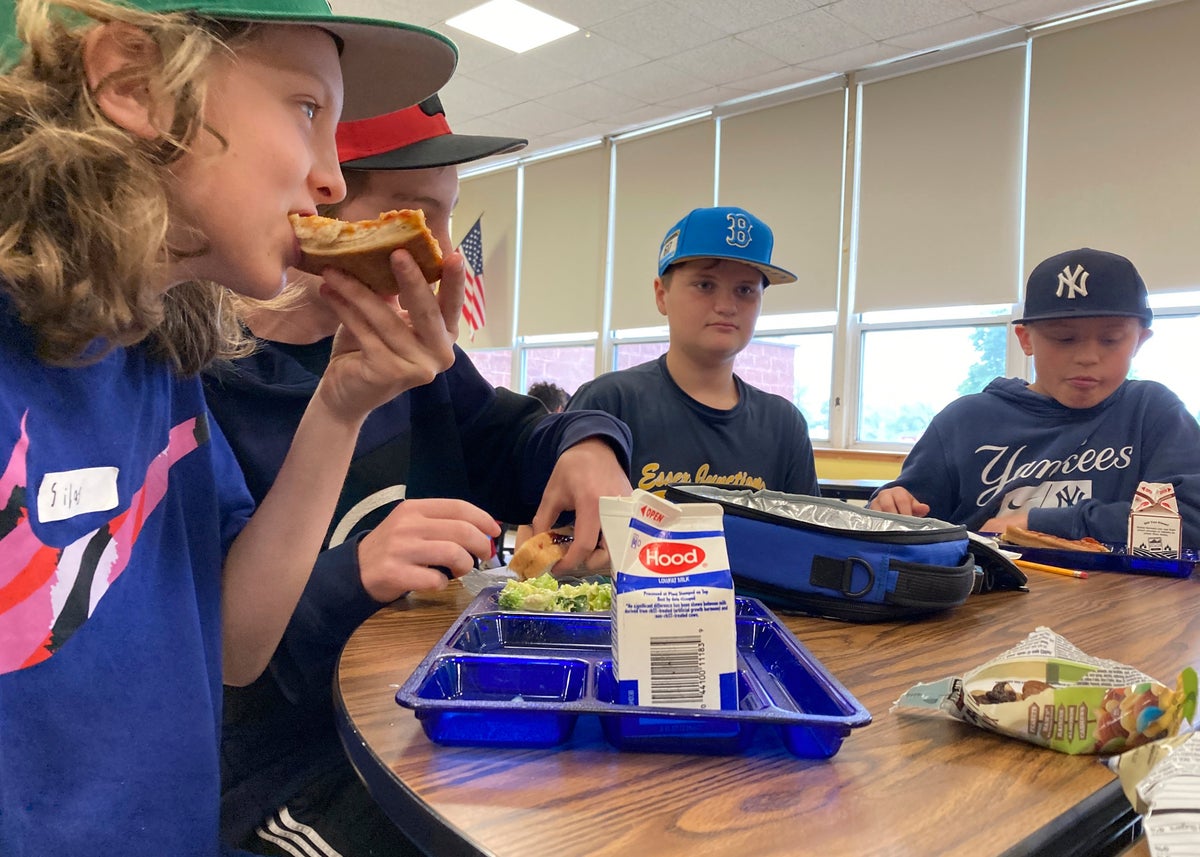
EDITORS/NEWS DIRECTORS:
Adjustments to school meal programs for the pandemic vastly expanded the availability of free meals for students. One of the waivers granted by the U.S. Department of Agriculture, which administers the National School Lunch Program, has allowed school systems to serve meals to all at no cost to students.
More than two years later, free meals for all students, regardless of their families’ income, is ending, raising concerns among families, advocates and school officials about the affordability of nutritious meals.
Other rule changes allowed for more meal distribution sites and to-go meals for students during summer months, when school is out of session. A new law approved over the weekend by President Joe Biden aims to keep the expanded, pandemic-era distribution of free meals for all students this summer.
After that, universal meals will end in the upcoming school year, a move some families will feel acutely. The change comes as other federal supports like expanded child tax credits have already ended and as prices soar for food and gas. Advocates say families are still struggling, even those whose kids were not eligible for free or reduced-price lunch.
Here are some tips on how to localize the story.
QUESTIONS TO ASK
— What do local food banks and anti-hunger groups see as far as demand? What changes do they anticipate if free school meals are no longer available as widely as they have been?
— What kind of discussions are playing out locally and at the state level around investing resources to help make school meals more accessible as the federal money begins to dry up? And how are those discussions factoring in benefits like the elimination of school meal debt, approaches that eliminate stigma for those qualifying for free lunch, and the ability to guarantee access to healthy food for all?
— How is your local school system communicating about the need for families to fill out paperwork once again to qualify for free or reduced-price school meals?
Visiting a summer meal distribution site could put you in touch with students and families who could speak to the importance of the meal programs as they navigate pressures related to inflation and the end of other supports.
HELPFUL RESOURCES
A number of government organizations and advocacy groups have reports and data on the various meals programs for students.
— The USDA has a list of open summer meal distribution sites here. Each site has a contact name and phone number listed.
— Individual school districts in your area are likely to have data on how many of their students will qualify for free or reduced-price lunch — and how many will have to pay out of pocket once again when the rule changes expire for school meals. They also are likely to have data on participation levels in local meal programs.
— The USDA has information about the National School Lunch Program and the School Breakfast Program on its website.
— A number of advocacy groups such as the Food Research and Action Center and No Kid Hungry also have their own reports on the effects of the federal rule changes that can be helpful in understanding the issues.







